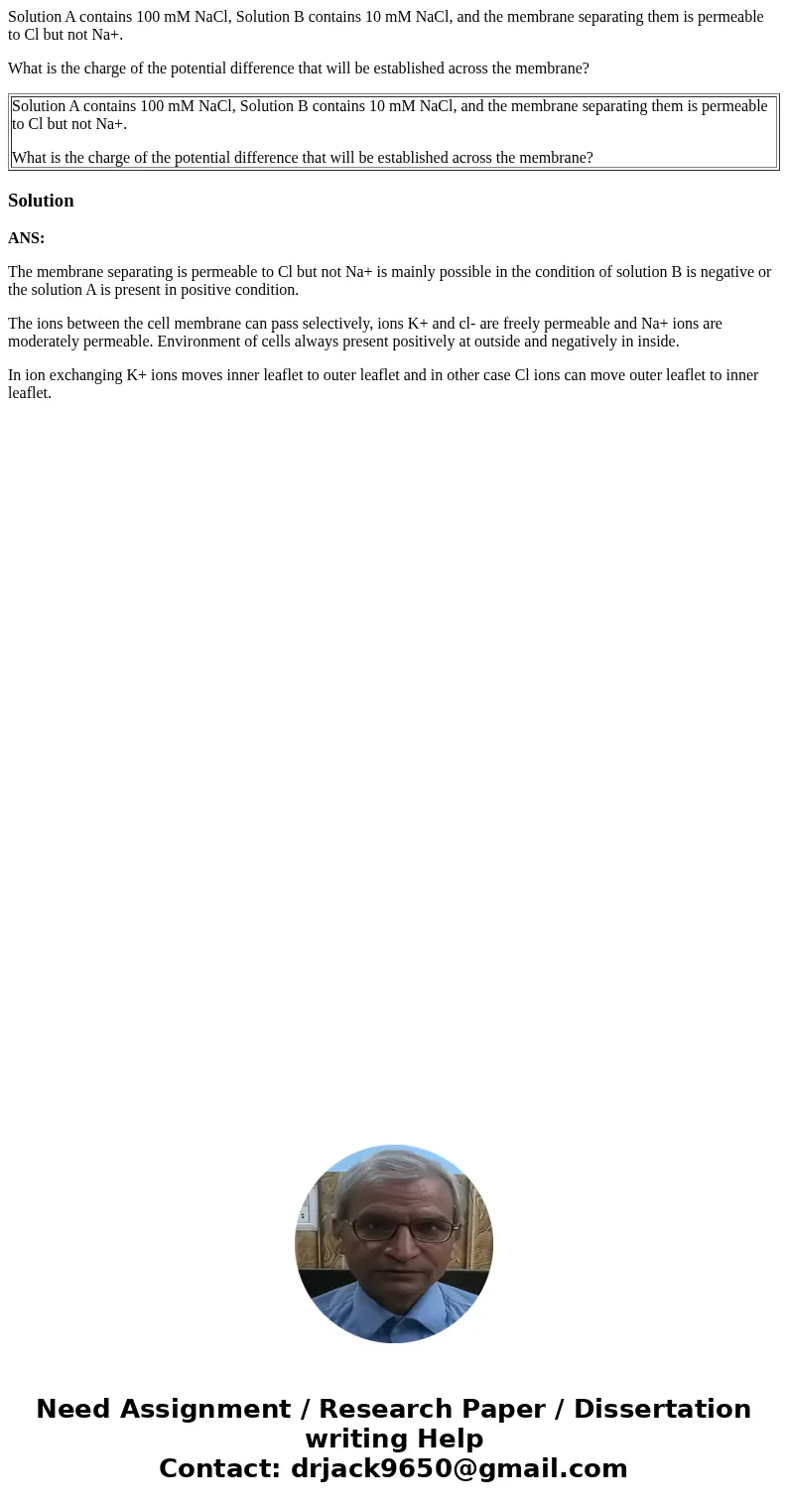Solution A contains 100 mM NaCl Solution B contains 10 mM Na
Solution A contains 100 mM NaCl, Solution B contains 10 mM NaCl, and the membrane separating them is permeable to Cl but not Na+.
What is the charge of the potential difference that will be established across the membrane?
| Solution A contains 100 mM NaCl, Solution B contains 10 mM NaCl, and the membrane separating them is permeable to Cl but not Na+. What is the charge of the potential difference that will be established across the membrane? |
Solution
ANS:
The membrane separating is permeable to Cl but not Na+ is mainly possible in the condition of solution B is negative or the solution A is present in positive condition.
The ions between the cell membrane can pass selectively, ions K+ and cl- are freely permeable and Na+ ions are moderately permeable. Environment of cells always present positively at outside and negatively in inside.
In ion exchanging K+ ions moves inner leaflet to outer leaflet and in other case Cl ions can move outer leaflet to inner leaflet.

 Homework Sourse
Homework Sourse